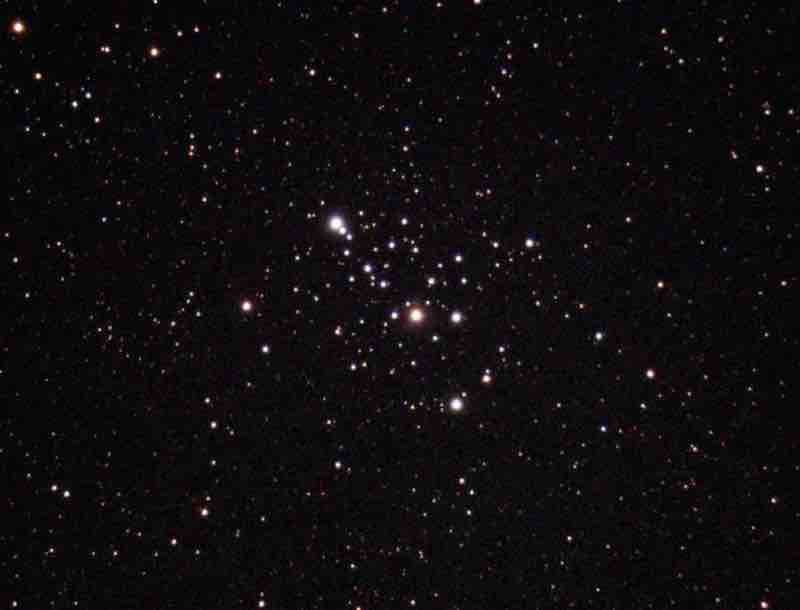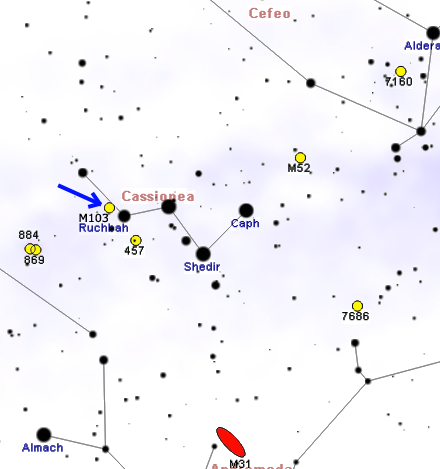M103 - Open Cluster in Cassiopeia
Initially, my interest in clusters was rather limited, until the introduction of Electronically Assisted Astronomy (EAA) transformed my perspective. Witnessing my inaugural encounter with a Globular Cluster through this medium marked a turning point. Subsequently, Globular Clusters have held a prominent role in my observation sessions. Conversely, Open Clusters haven't typically captured my attention. However, sporadically, one emerges that truly captivates me. M103 (NGC581) is a prime example of this phenomenon.
transformed my perspective. Witnessing my inaugural encounter with a Globular Cluster through this medium marked a turning point. Subsequently, Globular Clusters have held a prominent role in my observation sessions. Conversely, Open Clusters haven't typically captured my attention. However, sporadically, one emerges that truly captivates me. M103 (NGC581) is a prime example of this phenomenon.
What sets M103 apart is its compact arrangement, featuring a close-knit grouping of merely a few stars. Notably, a resplendent red giant star graces the cluster, creating a remarkable contrast against the canvas of blue and white stars that envelop it.
a remarkable contrast against the canvas of blue and white stars that envelop it.
This distinct cluster is nestled within the constellation Cassiopeia and is situated at a distance of roughly 8,000 to 9,500 light-years away. When observed, it manifests as a nebulous patch, positioned around on third of the way from Epsilon Cassiopeiae - one of the northern endpoints of the prominent W asterism - on the outer curve of the W.

